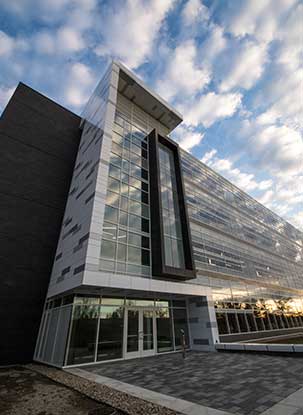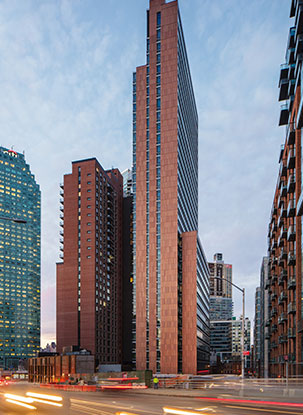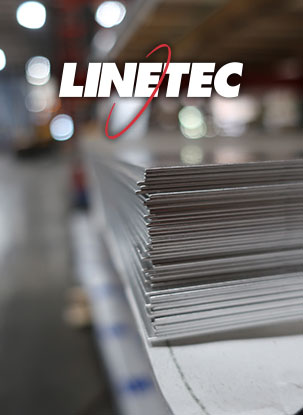 Coastal areas are beautiful locations for commercial and residential buildings. They also pose the greatest challenges in protecting exterior-facing architectural aluminum products from corrosion. Windows, storefronts, entrances and curtainwalls, sun shades, canopies, skylights, column covers, rain screens and exterior panels all commonly are manufactured from aluminum and integrally connect to a building’s façade. Without proper precautions and finishes, corrosion to these components ultimately can damage the structural integrity of the building envelope and can lead to systemic failure.
Coastal areas are beautiful locations for commercial and residential buildings. They also pose the greatest challenges in protecting exterior-facing architectural aluminum products from corrosion. Windows, storefronts, entrances and curtainwalls, sun shades, canopies, skylights, column covers, rain screens and exterior panels all commonly are manufactured from aluminum and integrally connect to a building’s façade. Without proper precautions and finishes, corrosion to these components ultimately can damage the structural integrity of the building envelope and can lead to systemic failure.
 As a prominent part of the buildings’ exterior, the coated aluminum adds color and design to the project; this coating also protects the building from unsympathetic surroundings. When selecting a coating that will be required to stand up to harsh coastal or corrosive environments either the highest-performing organic paint coating, that meets the AAMA 2605-11 specification, or a Class I anodize coating that meets AAMA 611-12 should be selected. AAMA continues to set the highest standard for architectural coatings, especially in a coastal or highly corrosive environment.
As a prominent part of the buildings’ exterior, the coated aluminum adds color and design to the project; this coating also protects the building from unsympathetic surroundings. When selecting a coating that will be required to stand up to harsh coastal or corrosive environments either the highest-performing organic paint coating, that meets the AAMA 2605-11 specification, or a Class I anodize coating that meets AAMA 611-12 should be selected. AAMA continues to set the highest standard for architectural coatings, especially in a coastal or highly corrosive environment.
High-performance 70% polyvinylidene fluoride (PVDF) coatings give architects, specifiers and building owners the capability to select nearly any conceivable color or combination of colors, while shielding the building against weathering, pollution and aging.
PVDF is known for its exceptional chemical stability and excellent resistance to UV radiation. It is used in architectural applications as a coating on aluminum where it provides exceptional resistance to environmental exposure. The chemical structure of PVDF is:
The carbon-fluorine bond, used in the 70% PVDF, Kynar 500 resin-based, coating is one of the strongest bonds known. These paint coatings have the ability to withstand enduring and intense UV radiation, attributed to long-term color- and gloss-retention, and chalk-resistance.
 These highest-performing 70% PVDF coatings meet the most stringent, exterior, architectural specification AAMA 2605-11. This specification requires paint coatings to meet rigorous testing performance standards including more than 4,000 hours of salt spray, and heat- and humidity-resistance.
These highest-performing 70% PVDF coatings meet the most stringent, exterior, architectural specification AAMA 2605-11. This specification requires paint coatings to meet rigorous testing performance standards including more than 4,000 hours of salt spray, and heat- and humidity-resistance.
Section 8.8 of AAMA 2605 refers to the corrosion resistance requirements of all coating that must pass these stringent guidelines:
- Humidity –The sample is exposed in a controlled heat and humidity cabinet for more than 4,000 hours at 38ºC (100ºF) and 100% relative humidity. No formation of blisters to extent greater than “few” blisters, as defined by ASTM D714.
- Cyclic Corrosion Testing (previous referred to as salt spray resistance) – Score the film sufficiently deep to expose the base metal. Expose the sample for 2,000 hours according to ASTM G85, Annex A5, dilute electrolyte cyclic fog/dry test. The sample must score a minimum rating of 7 on scribe or cut edges and a minimum blister rating of 8 within the test specimen field, as defined in ASTM1654.
- South Florida exposure – The coating shall maintain its film integrity, color retention, chalk resistance, gloss retention and erosion resistance properties for a minimum of 10 years on the south Florida on-fence testing site.
- Color retention – Maximum of 5ΔE Units (Hunter) of color change after the minimum 10-year exposure test. A ΔE unit is the variance or color difference measured on a vector scale from a specific point in the color space.
- Chalk resistance – Chalking shall be no more than that represented by a No. 8 rating for colors and No. 6 for whites after 10 years of test fence exposure. Per ASTM D4214, chalking is measured on a numerical scale with higher numbers representing better chalk resistance.
- Gloss retention – Gloss retention shall be a minimum of 50% after the 10-year exposure testing, as described by ASTM D 523.
- Resistance to erosion – Less than 10% film loss after the 10-year exposure testing.
Linetec, and the leading paint manufacturers, recommend the use of a PVDF-based paint system on aluminum material for all coastal and corrosive environments.Offering the longest lifecycle and true sustainability, a 70% PVDF (Kynar) coating system, pretreated with chrome phosphate, along with an inhibitive chrome rich primer should be used. This coating type meets or exceeds all the requirements of AAMA 2605 the highest performing “Voluntary Specification for High Performance Organic Coatings on Architectural Extrusions and Panels.”
To ensure your finish offers specifiable differences that contribute to your project’s long life, durability and sustainability, download a free copy of “Section 05 0513 Shop Applied Coatings for Metal 3-part Guide Specification”





